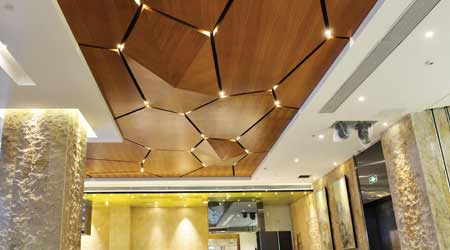 With the promise of longer performance lives and lower costs than traditional lighting systems, LEDs are an appealing option for applications throughout commercial and institutional facilities.
With the promise of longer performance lives and lower costs than traditional lighting systems, LEDs are an appealing option for applications throughout commercial and institutional facilities.LEDs: Strategies to Reduce Energy Costs
LED incentives can help organizations reduce energy costs and improve ROI.
Savings from upgrades
The main appeal of LEDs is reduced energy costs and savings resulting from upkeep and re-lamping. For a new facility, installing LEDs is a relatively easy choice to make, depending on the designing engineer and available budget. In an existing facility, upgrading traditional lighting systems to LEDs can be considerably more difficult.
Justifying the cost of a lighting upgrade project must start with defining current energy and upkeep costs associated with the lighting systems. These costs become the cost baseline. Using this data as a baseline, managers can calculate energy savings on a per-fixture basis over time to show the long-term cost savings of the project. Comparing these savings to the up-front cost of the project might provide insight in the return on investment (ROI) of such an endeavor. When assessing the ROI on a lighting upgrade project, managers need to remember that returns must be realized over the long term.
Also, when working to project the energy savings associated with a lighting upgrade, it is also important to understand the current lighting control and energy saving strategies. If the application does not use a lighting control strategy, managers might be able to find additional cost savings without the need for undergoing a complete upgrade. Conversely, if effective lighting control and savings programs are in place, it is important to understand the way the proposed system will work with the current controls and energy-reduction strategy.
Managers also need to consider the compatibility of new LED fixtures with the existing controls and management system, especially dimming controls. Will the upgraded fixtures be compatible with the existing control system, or will the control also require an upgrade? If so, the result could be additional project costs.
The additional lighting components that managers specify and install with the upgrade also can affect the upgrade’s projected energy savings. Ensuring that the proposed hardware meets the needs and demands of the facility are paramount. This includes the ability to operate in dynamic environments, on-off cycles due to changes in occupancy, and ultimately robustness of the proposed hardware when compared to products currently installed in the facility.
As with many successful applications, low cost, sub-quality products have entered the market, often shipping from overseas sources. These products might have the look and the marketing, but they might not live up to the promises. With that in mind, managers need to be certain that they do, in fact, get what they pay for in terms of the equipment they specify for their lighting upgrades.
John Lutz is director of mission-critical services for Horizon Engineering Associates — www.horizon-engineering.com — in Charlotte, N.C. A nuclear electricians mate in the U.S. Navy, John has more than 13 years of experience in the operation, maintenance and management of critical systems and facilities.
Related Topics:














